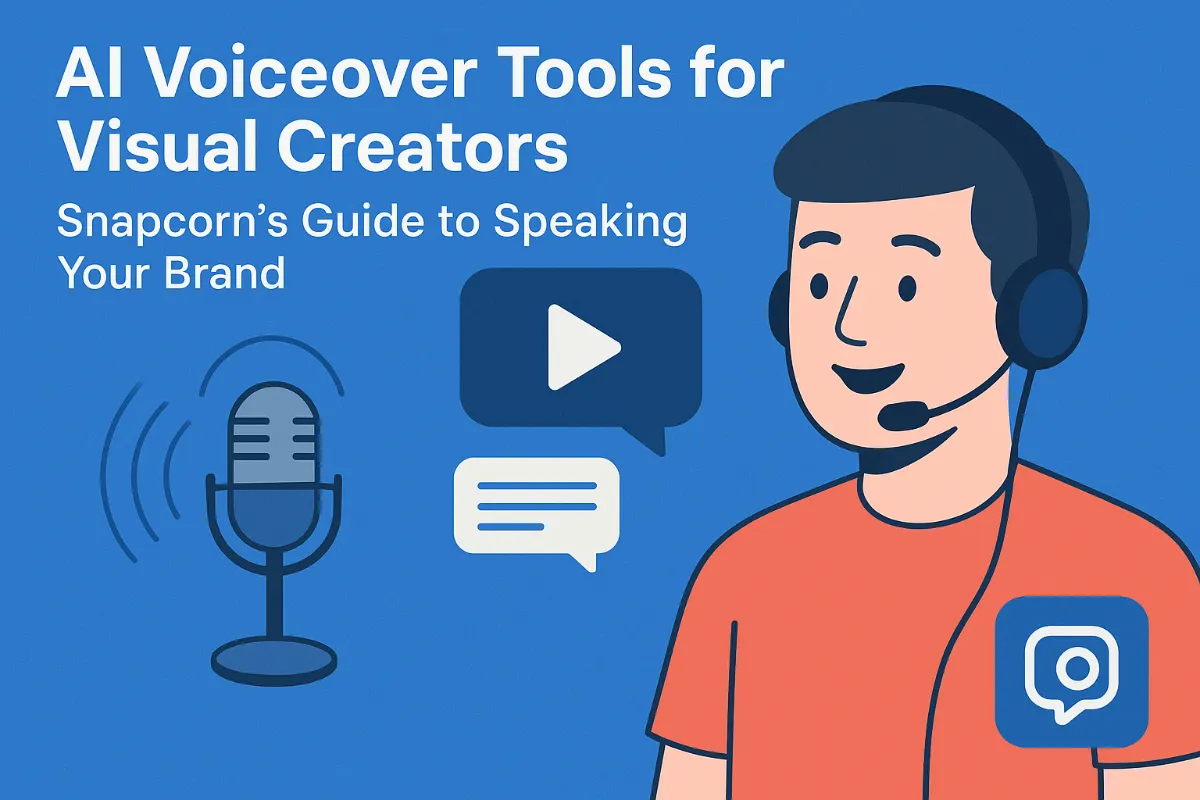Few-Shot Learning for Image Restoration: A Photographer's Guide
Introduction to Few-Shot Learning in Image Restoration
Ever wished you could restore old family photos without spending hours tweaking settings? Few-shot learning is emerging as a game-changer for image restoration, especially when dealing with limited data.
Traditional deep learning models require vast amounts of labeled data to perform effectively. However, in image restoration, acquiring such data is often a hurdle.
- Specific image degradation types, like unique film scratches or water damage, rarely have extensive datasets available.
- Annotating damaged images is time-consuming and subjective, requiring expert knowledge to accurately label the degradation.
- This is where few-shot learning comes in, offering a way to train models with only a handful of examples.
Few-shot learning allows models to generalize to new tasks with only a few training examples. It is a subset of meta-learning, where the model learns how to learn.
- The model learns from a limited support set of labeled examples and applies that knowledge to restore unseen images in the query set.
- A common term is "N-way K-shot learning," where "N" is the number of novel categories, and "K" is the number of labeled samples per category. For example, a 5-way 1-shot setup means the model learns from one example each of five new types of image damage.
Few-shot learning offers several advantages for photographers and image restoration professionals.
- It enables the restoration of old or damaged photos without needing a large dataset of similar images.
- Models can quickly adapt to specific types of degradation, such as unique film scratches or water damage.
- This approach reduces the computational cost and time associated with training large, data-hungry models.
Data Augmentation: Boosting Performance with Limited Data
When you don't have much data, data augmentation is crucial. It's all about creating synthetic training data from your existing limited examples to make your models smarter.
- Applying Transformations: Think of it like giving your existing photos a makeover. By applying simple transformations like rotations, crops, or slight color adjustments, you can generate multiple variations from a single original image. This artificially expands your dataset, making it look much larger than it actually is.
- Generative Models (GANs): For a more advanced approach, generative models like GANs can create entirely new, realistic degraded images. This is super helpful because it teaches the model to handle a wider range of potential image issues it might encounter in the real world, even if you don't have real examples of them.
These augmentation techniques are key to making few-shot learning models perform better, especially when you're starting with a small collection of images.
Core Techniques in Few-Shot Image Restoration
Imagine being able to teach your camera new tricks with just a handful of photos. That's the promise of core techniques in few-shot image restoration.
This section covers the fundamental methods that empower models to restore images using minimal data. Let's dive into the mechanics.
Metric-based learning focuses on learning a distance metric between degraded and restored image patches. The goal is to quantify how similar two images are in terms of quality or content.
- Siamese Networks are a key tool. These networks train to compare pairs of images and determine their similarity. They learn to recognize patterns of degradation and how they relate to the original, clean image. For instance, you might feed a Siamese network a degraded patch and a clean patch of the same area. The network learns to output a low similarity score if they're very different and a high score if they're close.
- Triplet Loss is another technique. It trains a network to learn embeddings where similar images are close and dissimilar images are far apart. This helps the model understand the nuances of image quality. In image restoration, this could mean training the network so that two slightly degraded versions of the same image are closer in the embedding space than a degraded image and a completely different clean image.
Meta-learning takes a broader approach, training a model to learn how to learn image restoration tasks. It's about equipping the model with the ability to quickly adapt to new types of image damage.
- Model-Agnostic Meta-Learning (MAML) optimizes a model to quickly adapt to new tasks with only a few gradient steps. This allows it to fine-tune its restoration process with very little data.
- Reptile is a simplified version of MAML that focuses on finding a good initialization point for fast adaptation. It helps the model start from a point where it can quickly learn new restoration tasks.
These core techniques are the building blocks for effective few-shot image restoration.
Practical Applications for Photographers
Imagine rescuing a priceless photograph from the brink of oblivion with just a few clicks. Few-shot learning makes this a reality, providing photographers with powerful tools to tackle image restoration challenges.
Few-shot learning steps in when you have a handful of damaged photos and no extensive dataset.
- You can restore faded, scratched, or torn photographs by training a model on a small set of similar photos or even synthetic data. This approach allows the model to learn the specific types of damage present in your photos.
- This method can achieve better results than generic image restoration tools. It tailors the restoration process to the unique characteristics of the images.
- This ensures that the restored images retain their authenticity and emotional value.
Product photography often demands high-quality images, but what if you're working with unique or rare items?
Few-shot learning lets you improve the quality of product images even with minimal training data. You can train the model on a small set of high-quality product images.
The model can remove noise, enhance details, and improve color accuracy. This ensures that your product photos are visually appealing and accurately represent the item.
This process automates the enhancement of product photos for e-commerce, saving time and resources.
Snapcorn offers a suite of ai-powered tools to transform your images effortlessly.
Leverage our Background Remover for clean, professional product shots and portraits.
Enhance image clarity with our Image Upscaler, perfect for printing and detailed viewing.
Restore old memories with our Image Restoration tool, bringing faded photos back to life.
Add vibrancy to black and white images using our Image Colorizer.
All tools are free and require no sign-up. Visit Snapcorn to start transforming your images today!
These practical applications highlight the transformative potential of few-shot learning in photography.
Implementing Few-Shot Image Restoration: A Step-by-Step Guide
Implementing few-shot learning might seem daunting, but breaking it down into manageable steps makes the process much clearer. This section provides a step-by-step guide to help you implement few-shot image restoration effectively.
The first step involves gathering your data. It's crucial to have a small, well-curated dataset of degraded images and their corresponding high-quality versions.
- Begin by collecting a limited set of damaged photos and their pristine counterparts. These could be historical photos, damaged product shots, or images with specific artifacts.
- Preprocess these images by resizing them to a consistent size. Normalizing the pixel values ensures the model handles the data uniformly. Aligning the images can further enhance performance.
- If your dataset is exceptionally small, consider using synthetic data augmentation. Generate variations of existing images to expand the dataset artificially.
Selecting the right model is critical for success. Consider architectures designed for few-shot learning.
- Opt for a Siamese Network to compare image similarities or a Meta-Learner to learn how to adapt quickly. These architectures are designed to work with limited data.
- Leverage pre-trained models on large datasets like ImageNet for feature extraction, as mentioned earlier. This can reduce the amount of training data needed.
- Adapt the model architecture to suit your specific image restoration needs. Fine-tune the layers to focus on the types of degradation you're addressing.
With your data prepared and model chosen, you can proceed with training. Use metrics to evaluate performance.
- Train your few-shot learning model using your prepared dataset. Monitor the training process to ensure the model is learning effectively.
- Choose appropriate loss functions to measure the difference between restored and original images. Common loss functions include Mean Squared Error (MSE), L1 loss, or perceptual loss.
- Use a validation set to tune hyperparameters and prevent overfitting during training. This set is separate from your test set and helps you make adjustments without "cheating" on the final evaluation.
- Evaluate the model's performance on a separate test set. Use metrics such as Peak Signal-to-Noise Ratio (PSNR) and Structural Similarity Index Measure (SSIM), alongside visual inspection, to gauge the quality of the restored images.
Implementing these steps will set you on the path to successful few-shot image restoration.
Advanced Techniques and Future Trends
Imagine teaching an old dog new tricks – but with photos! Advanced techniques in few-shot learning are pushing the boundaries of image restoration, enabling more sophisticated and efficient results.
Generative Adversarial Networks (GANs) can play a pivotal role in enhancing the realism of restored images. The key is to use GANs within a few-shot learning framework.
- Employ GANs to generate realistic restored images from degraded inputs, even when training data is scarce. The generator aims to create plausible images, while the discriminator distinguishes between real and restored images.
- Train the GAN using a few-shot learning approach to handle limited data, ensuring that the model can generalize effectively with only a few examples. This involves training the GAN on a small set of image pairs (degraded and pristine) and using techniques like meta-learning to improve generalization.
- Explore conditional GANs (cGANs) to control the restoration process based on specific degradation types. By conditioning the GAN on the type of damage (e.g., scratches, noise, or blur), the model can selectively apply restoration techniques. The "condition" could be a label or a feature vector representing the type of damage, fed into the generator alongside the degraded image.
Self-supervised learning offers a creative way to sidestep the need for extensive labeled data. The model learns to restore images by creating its own training signal.
- Train models on unlabeled data by creating artificial degradation and learning to restore the original image. For example, randomly mask parts of an image and train the model to fill in the missing pixels.
- Use self-supervised pre-training to improve the performance of few-shot learning models. Pre-train the model on a large dataset of unlabeled images, then fine-tune it on a small set of labeled images for the specific restoration task.
- Explore techniques like masked image modeling and contrastive learning to enhance the model's ability to understand and restore images with minimal supervision.
Attention mechanisms enable the model to focus on the most relevant parts of an image during restoration. This can significantly improve the quality of the restored output.
- Incorporate attention mechanisms to focus on relevant image regions during restoration, allowing the model to prioritize damaged areas while preserving intact regions.
- Use attention to selectively restore damaged areas while preserving intact regions. This helps the model to avoid over-smoothing or introducing artifacts in undamaged parts of the image.
- Explore transformer-based architectures for image restoration. Transformers, with their self-attention mechanisms, can capture long-range dependencies in images, leading to better restoration results.
By combining these advanced techniques, photographers and image restoration professionals can unlock new possibilities in image enhancement and preservation.
Overcoming Challenges and Limitations
Few-shot learning isn't without its hurdles, but understanding these challenges helps photographers use it effectively. Let's explore some common limitations and how to address them.
One key challenge is that few-shot learning models can struggle with image damage they haven't seen before. If a model trains primarily on images with scratches, it may not perform well on images with water damage.
- To combat this, use domain adaptation techniques. This involves fine-tuning the model on a small set of images that contain the new types of degradation.
- Another approach is meta-learning, where the model learns how to quickly adapt to new degradation types.
- Consider using ensembles of models, where each model is trained on a different set of degradation types. Combining their outputs can improve overall performance.
Due to the limited data, few-shot learning models are prone to overfitting. This means the model performs well on the training data but poorly on new, unseen images.
- Use regularization techniques like dropout and weight decay. These methods prevent the model from memorizing the training data and encourage it to generalize better.
- Dropout randomly omits some neurons during training, forcing the network to learn more robust features.
- Weight decay penalizes large weights, preventing the model from becoming too specialized to the training data.
- It is also important to carefully validate the model's performance on a diverse test set.
Training few-shot learning models, especially large ones, can still be computationally intensive. The need for powerful GPUs and significant training time can be a barrier for some users.
- Optimize the training process by using mixed-precision training, which uses lower precision numbers to speed up computations.
- Distributed training splits the training workload across multiple GPUs or machines, reducing the overall training time.
- Consider using cloud-based GPU resources for faster training. Cloud providers offer on-demand GPU virtual machines.
While few-shot learning presents unique challenges, understanding and addressing these limitations paves the way for more robust and practical image restoration solutions.
Conclusion: Empowering Photographers with AI
Few-shot learning is changing how photographers approach image restoration. With the power of ai, even damaged photos can regain their former glory.
- Few-shot learning is transforming the field of image restoration, making it accessible to photographers with limited data.
- Photographers can now restore images without needing vast datasets.
- This technology uses a small number of examples to train models, adapting quickly to specific image degradation.
- Ai-powered tools are becoming increasingly sophisticated, enabling high-quality restoration with minimal effort.
- These tools leverage advanced techniques like Generative Adversarial Networks (GANs) to enhance realism.
- Attention mechanisms help models focus on relevant image regions, improving restoration quality.
- Photographers can leverage these tools to enhance their workflow, preserve valuable memories, and create stunning visuals.
- Few-shot learning makes it possible to rescue priceless photographs from the brink of oblivion with just a few clicks.
- It tailors the restoration process to the unique characteristics of the images, ensuring authenticity and emotional value.
By embracing these advancements, photographers can unlock new creative possibilities. The future of image restoration is here, empowering you to bring old memories back to life.





